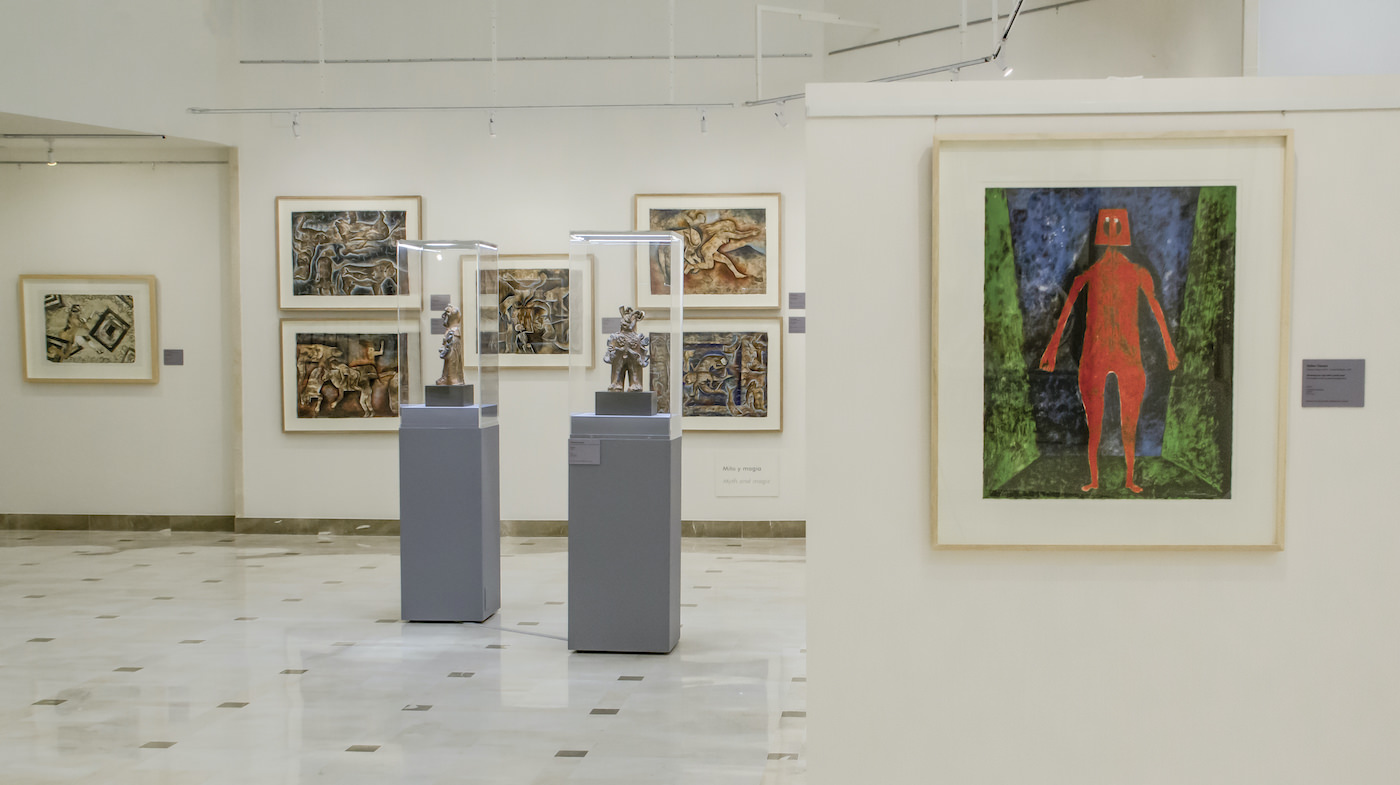Herman Braun-Vega, Peruvian Artist at Museo Ralli
Herman Braun-Vega was a Peruvian artist born in 1933 in the city of Lima. His work reveals a strong connection with European art and painting, distancing itself from contemporary artistic production in Peru, although without moving away from its themes. His visual language, which some have described as hyperrealist, goes far beyond reality, exploring a symbolic universe filled with meaning.
Since 1978, he has lived and painted in France, where he holds a prominent place within the New Figuration movement.
The Work of Herman Braun-Vega
Braun-Vega’s artistic production is marked by different stages and influences, with special emphasis on quotations or references to specific artists such as Ingres, Goya, Picasso, and Velázquez. Braun-Vega’s extraordinary technical mastery allows him to appropriate the works of these great masters of art history with complete precision, combining them at will. The composition of his pieces and the new perspective he applies to the artists he references or appropriates are the keys to his artistic language.
His works are characterized by profound social and political critique, with constant allusions to the situation of the Latin American continent, miscegenation, ruling and upper classes, as well as everyday life.
Among these themes, the so-called North-South series stands out. Begun in 1981 and still ongoing, this series reflects on cultural relationships and different eras. In it, Braun-Vega contrasts the great masters of classical European painting with contemporary Latin American reality, creating a visual dialogue between past and present.
“The Informal Family” and Cultural Mestizaje
Mestizaje—technical, historical, artistic, and cultural—is the dominant theme of his work, reaching its fullest expression in The Informal Family, which can be seen at Museo Ralli. This triptych belongs to the series “PERU/SPAIN, Memories Laid Bare,” created for the 1992 exhibition at the former Museum of Contemporary Art in Madrid.
In this series, Braun-Vega addresses both syncretism and cultural mestizaje, whether ethnic or artistic. Mestizaje allows him to freely integrate elements from different periods and cultures, using diverse techniques and languages while always seeking aesthetic unity and final coherence.
In The Informal Family, historical and artistic references intertwine with everyday scenes. The work explicitly evokes Velázquez’s Las Meninas, both in its composition and its title.
With this piece, Braun-Vega refers to the informal economy of developing countries: a family system that includes everyone from relatives to domestic workers, operating outside of formal taxation. “Informal” is also the term used by defenders of racial purity to describe mestizaje, despite its clear impossibility after five centuries of ethnic, cultural, and religious blending.
For the artist, the entire American continent—North and South—is today the result of these fusions that have shaped our current society.
In The Informal Family, as in a comic or graphic novel, images succeed and intertwine with each other: some belong to the past, others to the present, and all contribute to revealing a final message. No element is placed at random; each reference has a purpose within Braun-Vega’s visual language.
Herman Braun-Vega (1992), catálogo de la exposición “Perú/España. Memorias al desnudo” (Madrid, 1992). Ministerio de cultura, Dirección General de Bellas Artes y Archivos. ISBN: 8474838746.
“El sincretismo cultural en la obra de Herman Braun Vega”. En: RESONANCIAS (14/11/2019) por Héctor Loaiza. Disponible en: http://www.resonancias.org/content/read/197/el-sincretismo-cultural-en-la-obra-de-herman-braun-vega-por-hector-loaiza/ [Date of access: 14/11/2019]
Francisco José Villanueva Macias; “La realidad… es así. Estereotipos e implícitos culturales en la representación del extranjero en la clase de cultura de ELE”. Universidad Jean Moulin Lyon 3. ACTAS DEL XVI CONGRESO INTERNACIONAL DE ÁSELE. Disponible en: https://cvc.cervantes.es/ensenanza/biblioteca_ele/asele/pdf/16/16_0670.pdf [Date of access: 14/11/2019]
Loaiza, Héctor, 2001. El sincretismo cultural en la obra de Herman Braun Vega [en línea]. Resonancias. Arte. Disponible en: https://www.resonancias.org/content/197/el-sincretismo-cultural-en-la-obra-de-herman-braun-vega-por-hector-loaiza [Date of access: 23/02/2024]
Lomelí, Natalia, 2015. Los clásicos “contaminados” por el pincel de Braun Vega [en línea]. CULTURA COLECTIVA. En: https://braunvega.com/picture?/1175 [consulta: 23/02/2024]
SIURANA ROGLÁN, Manuel [en línea]. Braun?Vega y sus maestros, un recorrido por la historia del arte. Asociación Cultural Repavalde. Disponible: https://braunvega.com/index?/page/braun_vega_y_sus_maestros [Date of access: 30/08/2022]
Sitio web oficial del artista: http://www.braun-vega.com/es/bio.htm [Date of access: 30/08/2022]
Related artists
Related Exhibitions
RELATED PROGRAMS
RELATED CONTENT



